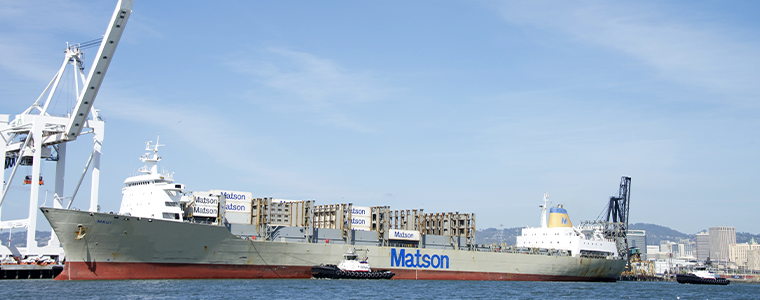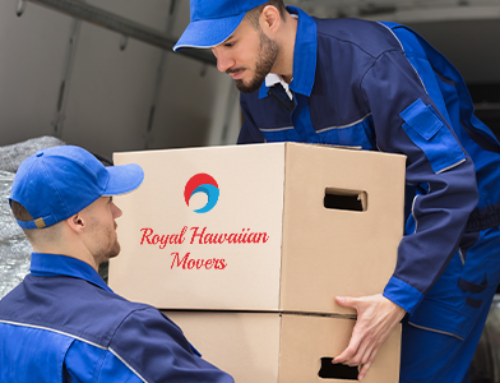Moving freight to a remote state like Hawaiʻi comes with challenges, and each of Hawaiʻi’s islands is different.
Take Maui, for example. If you’ve spent any time on the island, you know that Maui has its own way of operating, plus a unique terrain—two volcanoes that merged to form the Valley Isle. Add in varying road quality and width, and you’ll quickly see why moving freight on Maui comes with its own set of considerations.
We’ve had a location on Maui since 2001, and we’ve moved all kinds of freight to and around the island. If you’re considering opening a business on Maui—or you’re looking for some tips to create a smoother freight flow—we’ll show you the four things you need to know about Valley Isle freight.
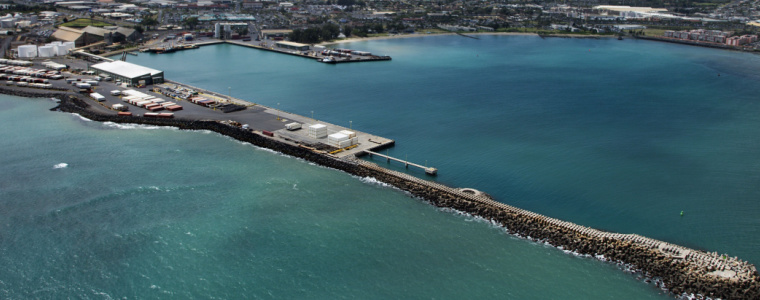
#1: Twice Weekly Service Is Available—and It Can Make a Big Difference
Some freight providers only offer weekly sailings between the mainland and neighbor islands like Maui. That means that if you miss a cut-off time, you’ll need to wait an additional week to get your freight to Maui.
This is especially frustrating when freight misses a sail date through no fault of your own. Perhaps your supplier was running behind and delivered the shipment late to the mainland terminal. If you’ve chosen a freight forwarder that can only access weekly sailings, you’ll just have to wait. And that’s going to cost you, either:
- In air freight charges, if you can’t wait a week and need to expedite that freight.
- In lost time or revenue, since you won’t be able to put that freight to use or get it out on the floor for sale.
- In customer dissatisfaction if you’ve promised those items to someone locally on Maui.
As you’re choosing a Maui freight provider, make sure to ask how many sailings they have access to—because it can make a huge difference to your business.

#2: Maui Is More Rural Than You May Realize
Even if you live on Maui, unless you’ve maneuvered a large truck or heavy equipment around the island, you might not realize all the potential pitfalls that a freight delivery crew can encounter.
Consider the Valley Isle’s:
- Hilly, mountainous areas with winding roads that large trucks may struggle to navigate.
- Narrow roads, even in some newer-construction areas. When you’re driving your car down streets that are the width of one-and-a-half cars, you might not think much of it. But if you’re a delivery crew driving a flatbed truck with a forklift, you’re probably looking at that road and thinking there’s not enough room to park the flatbed and maneuver the forklift alongside.
- Gravel parking lots or grassy areas, which are plentiful in Maui—and make using a pallet jack pretty much impossible.
In other words, although Maui’s beauty is legendary, its somewhat rural landscapes can make it a challenging place to deliver freight.
Additionally, as more companies employ remote workers and establish satellite locations, we’re seeing more deliveries to residential addresses. These can often mean grass or gravel for a delivery crew to navigate, as well as potentially steep, twisty driveways that might make using large equipment a challenge.
So, when you’re sending freight to Maui, what can you do in this arena? Two things:
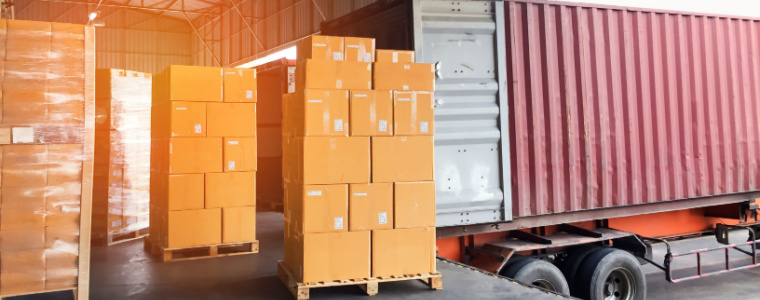
#3: For the Best Service from Beginning to End, There Is a “Right Size” For Freight
Experienced freight forwarders pride themselves on being able to handle all sizes and types of freight—oversized, heavy, oddly shaped, etc.
That said, there’s also an “ideal” type of less-than-container load (LCL) freight that’s very easy for a freight forwarder to load into a container.
Think of it this way: Loading a container is kind of like playing a game of Tetris. Forwarders are very good at it. But we all know that when a bunch of squares drop from the sky during Tetris, it’s very easy to find them a spot. That’s the kind of freight we’re talking about.
So what’s a “Tetris square” when it comes to less-than-container-load freight? Palletized freight that’s up to 84″ tall, 80″ wide and 48″ deep. That size fits perfectly into a container, and it also fits in a box truck.
What does this mean to you?
- You’re likely to get the best rates available, since it’s easy for a forwarder to find a spot for this kind of freight—and it’s easy for them to handle.
- You’ll subject your freight to minimal handling. Occasionally, when forwarders receive freight that doesn’t conform to those dimensions, they’ll deconsolidate it and re-wrap it. For example, let’s say you’ve got a pallet of stackable bins with a height of 104″ instead of 84″. It’s possible the forwarder might take the top level of bins off your pallet and wrap them to another pallet in order to fit your load in the container. When freight gets repackaged, there’s always a (slight) possibility of damage or mishandling. But if your freight conforms to the dimensions above, it’s likely that it will be shipped as-is, with minimal repackaging and handling.
- You’re likely to get quick and easy delivery. As we mentioned above, freight that conforms to these dimensions means this piece of freight can move in practically any kind of truck, including a box truck. These trucks are easy to maneuver around Maui, so your freight will arrive on the island ready to be quickly loaded and delivered to its final destination.
In other words, when you’re able to send standard-sized freight, you’ll set yourself up for the best rates and the best overall service possible.
Of course, we understand that’s not always doable, and we’re happy to work with you to deliver any kind of freight to any location on Maui. However, there are times when this type of packaging may be in your control, and this knowledge might save you some time and money—or both.
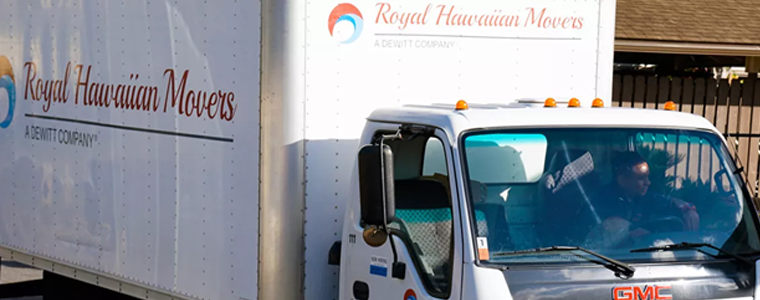
#4: Asset-Based Forwarders Mean Priority Delivery Times
As you choose a Maui freight provider, you’ll discover that some are asset-based, while others use agents on Maui. An asset-based provider owns its own fleet and employs its own crews. Providers that use agents, on the other hand, essentially outsource delivery to a company with a presence on Maui.
If everything goes right, you might not notice much of a difference.
However, there is one big reason to consider working with an asset-based provider on Maui: priority delivery times. In general, direct customers get first pick when it comes to scheduling and delivery. So if you ship freight with a provider that runs their own fleet on Maui, you’re more likely to get your freight quickly—and on the schedule you’re looking for. If your provider is using an agent, your freight may not move with the same level of priority.
The bottom line? Asset-based forwarders are more likely to get your freight in your hands, fast—and on the timeline that works for you.
Maui Freight Made Easy
Shipping freight to remote locations comes with its own unique considerations—and an island like Maui is no different. However, with these four must-knows under your belt, you’ll have a greater understanding of how freight moves to and around the island, setting yourself up for a smoother and faster flow when you’re moving freight to the Valley Isle.
Looking for a partner for your Maui freight? Reach out to our Kahului-based team to get started. They’ll be happy to get you a complimentary quote, and work closely with you to meet your business goals.
Tell us about your move!
